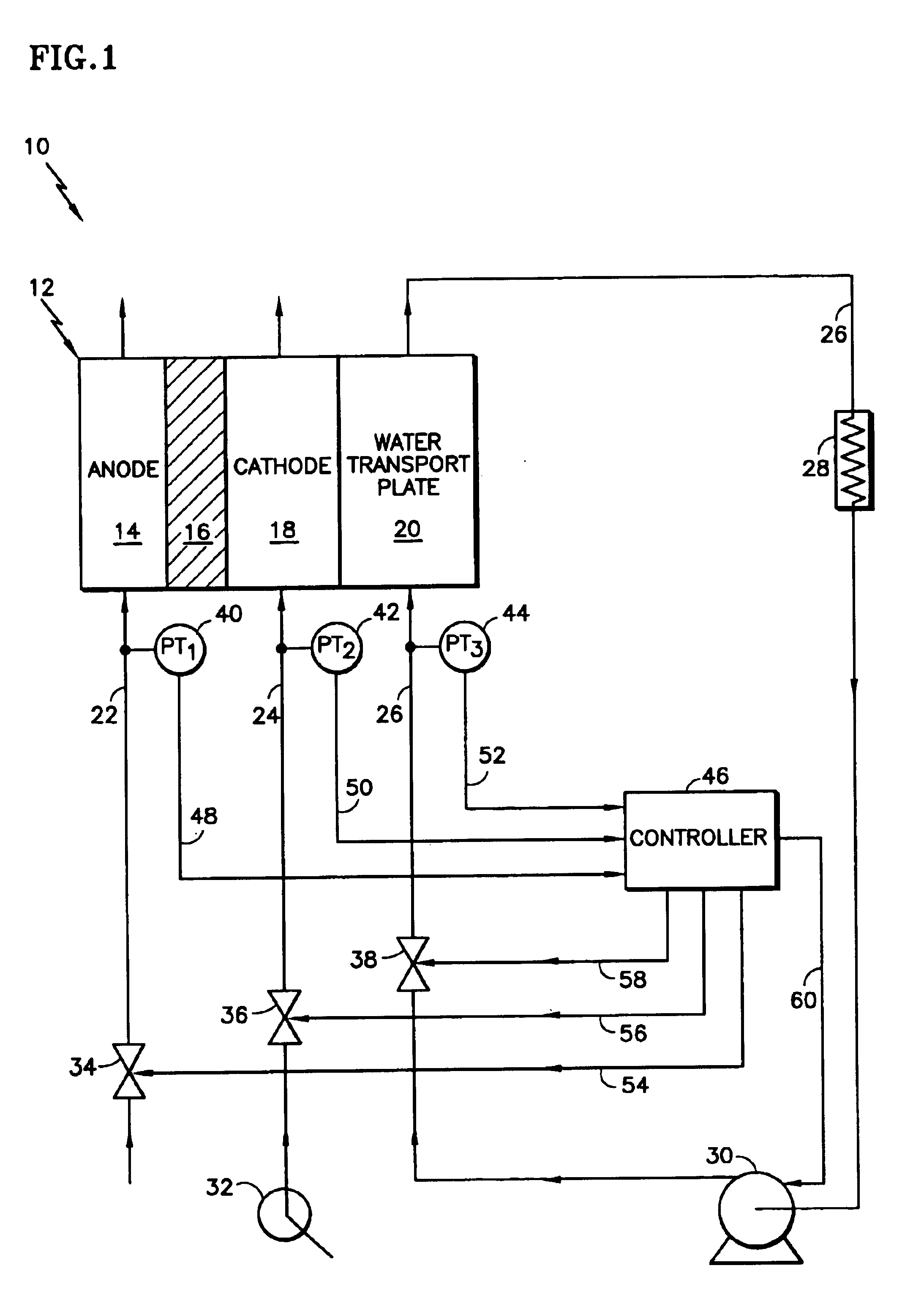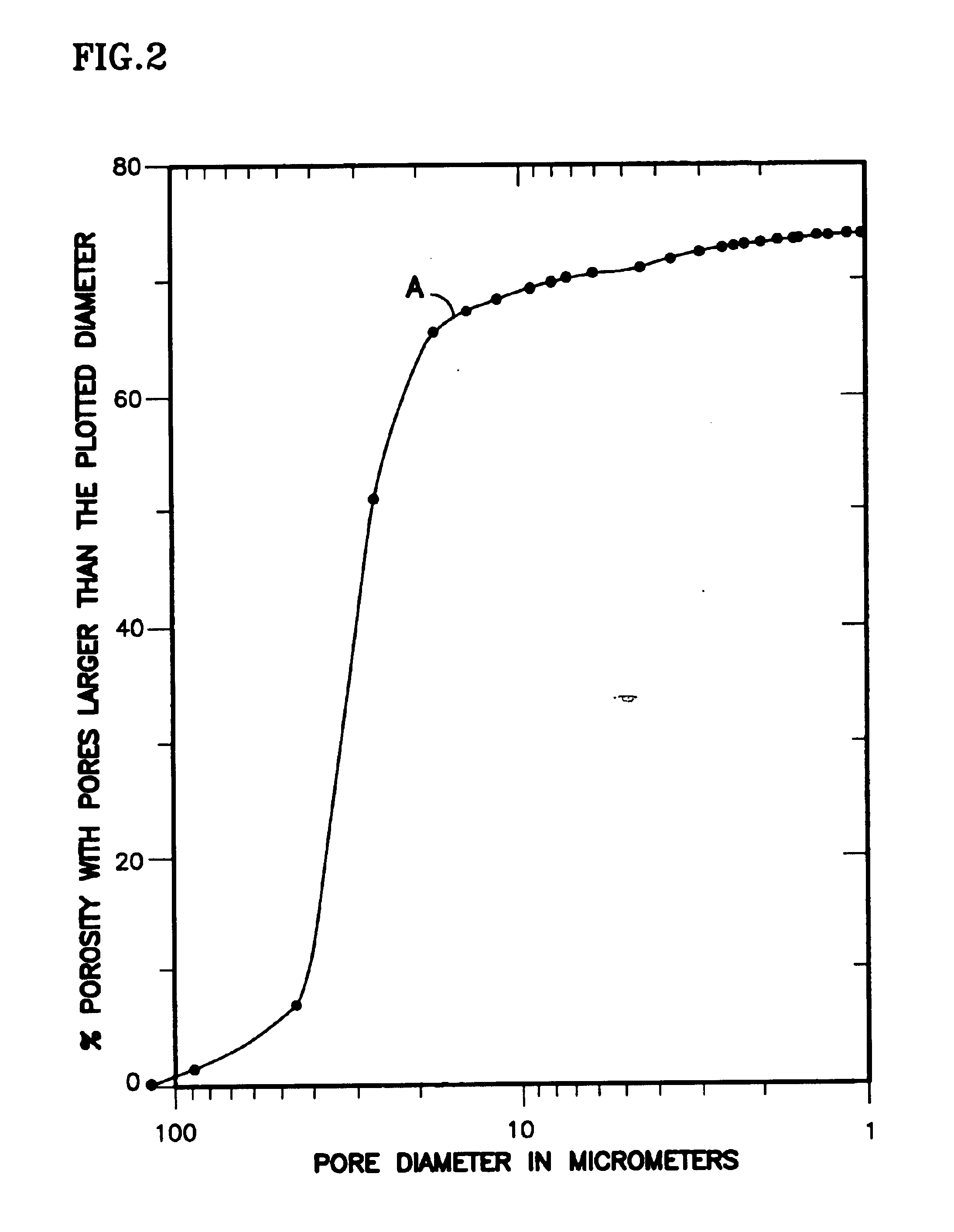Fuel cell having interdigitated flow channels and water transport plates
a technology of interdigitated flow channels and fuel cells, which is applied in the direction of fuel cell details, cell components, electrochemical generators, etc., can solve the problems of patent failure, reduced water content of catalyst layers, and reduced oxygen reaches the catalyst portion,
- Summary
- Abstract
- Description
- Claims
- Application Information
AI Technical Summary
Benefits of technology
Problems solved by technology
Method used
Image
Examples
Embodiment Construction
Referring to FIG. 1, there is shown a PEM fuel cell power plant 10 that includes a fuel cell 12 and a means for controlling the pressure of a fuel reactant gas stream 22, oxidant reactant gas stream 24 and coolant stream 26. A PEM fuel cell power plant 10 typically comprises a plurality of fuel cells, which are electrically connected in series and referred to as a cell stack assembly. However, for the purpose of simplicity in explaining the present invention, the fuel cell power plant 10 only includes one fuel cell 12, but it will be understood that the fuel cell power plant 10 typically comprises a predetermined number of fuel cells 12. Each fuel cell 12 includes an anode support plate 14, a cathode support plate 18 and a membrane electrolyte assembly (MEA) 16 disposed between the anode support plate 14 and the cathode support plate 18. The fuel reactant gas stream 22 supplies the anode support plate 14 with the fuel reactant gas, such as hydrogen from a fuel supply (not shown), an...
PUM
| Property | Measurement | Unit |
|---|---|---|
| pressure | aaaaa | aaaaa |
| pressure | aaaaa | aaaaa |
| pore diameter | aaaaa | aaaaa |
Abstract
Description
Claims
Application Information
 Login to View More
Login to View More - R&D
- Intellectual Property
- Life Sciences
- Materials
- Tech Scout
- Unparalleled Data Quality
- Higher Quality Content
- 60% Fewer Hallucinations
Browse by: Latest US Patents, China's latest patents, Technical Efficacy Thesaurus, Application Domain, Technology Topic, Popular Technical Reports.
© 2025 PatSnap. All rights reserved.Legal|Privacy policy|Modern Slavery Act Transparency Statement|Sitemap|About US| Contact US: help@patsnap.com



